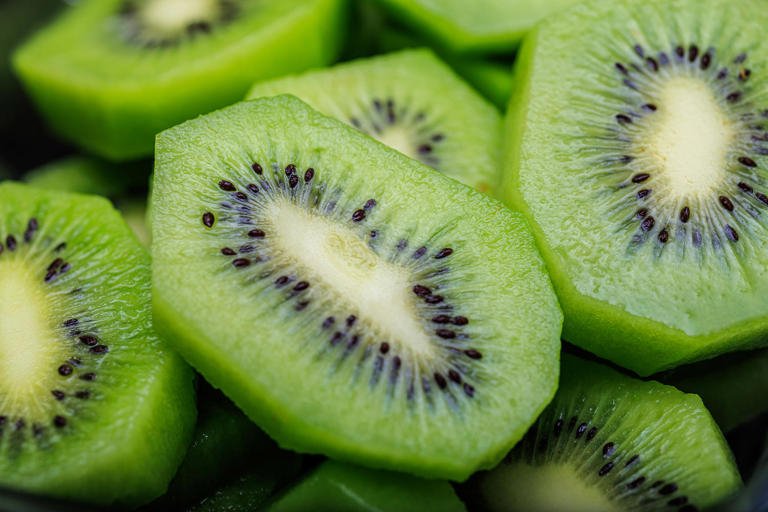Your Chronic Constipation Diet Is Changing: Here's Why

For decades, the advice for chronic constipation was straightforward, almost simplistic: "Eat more fiber." While this directive isn't entirely wrong, emerging science in gastroenterology and nutrition reveals a far more nuanced picture. The one-size-fits-all approach of loading up on bran muffins and salads is being replaced by a more sophisticated, personalized strategy focused on gut microbiome health, fiber type, and lifestyle synergy. If you've been struggling with chronic constipation despite following traditional advice, it’s not your fault—the paradigm is shifting.
The old model viewed constipation primarily as a mechanical issue: insufficient bulk to stimulate a bowel movement. The new model understands it as a complex disorder involving gut motility, the gut-brain axis, inflammation, and, most critically, the ecosystem of bacteria living in your colon—your gut microbiome. This refined understanding is fundamentally changing how we use diet as a therapeutic tool.
How the Dietary Approach is Evolving
The modern anti-constipation diet moves beyond mere fiber quantity to focus on fiber quality, hydration, and microbial support. Here’s a breakdown of the key pillars of this new approach:
1. The Shift from "More Fiber" to the "Right Fiber"
The blanket advice to "eat more fiber" often backfires, especially for those with slow-transit constipation or underlying conditions like Irritable Bowel Syndrome (IBS). Insoluble fiber (found in wheat bran, nuts, and vegetables) can be too harsh and bulky for some, exacerbating bloating and discomfort.
The new focus is on soluble and fermentable fibers. These fibers dissolve in water, forming a gel that softens stool and makes it easier to pass. More importantly, they act as prebiotics—food for the beneficial bacteria in your gut.
-
How to Implement:
-
Prioritize Soluble Fibers: Incorporate foods like oats, psyllium husk, barley, legumes (lentils, chickpeas), and fruits like apples (with skin), pears, and citrus.
-
Introduce Fermentable Fibers Gently: Foods like onions, garlic, leeks, and asparagus are excellent prebiotics, but can cause gas. Start with small amounts to allow your microbiome to adapt.
-
Consider Psyllium: Psyllium husk is a standout supplement because it is a gel-forming, non-fermentable soluble fiber. It increases stool water content reliably without excessive gas production.
-
2. The Critical Role of Hydration and Electrolytes
Fiber without adequate water is like trying to make cement without water—it creates a hard, immovable mass. The new dietary model emphasizes hydration as a non-negotiable partner to fiber intake. Furthermore, minerals like magnesium and potassium play vital roles in muscle contraction and drawing water into the colon.
-
How to Implement:
-
Hydrate Strategically: Aim for 2-3 liters of fluid daily, primarily water. Herbal teas like peppermint or ginger can also be beneficial.
-
Eat Water-Rich Foods: Cucumbers, celery, zucchini, watermelon, and berries contribute to your overall fluid intake.
-
Focus on Magnesium: Increase intake of magnesium-rich foods like spinach, pumpkin seeds, almonds, avocados, and dark chocolate. Magnesium citrate, in particular, has an osmotic effect, pulling water into the intestines.
-
3. Feeding Your Gut Microbiome
This is the cornerstone of the new approach. A diverse and healthy gut microbiome is essential for regular bowel movements. Beneficial bacteria ferment dietary fiber, producing short-chain fatty acids (SCFAs) like butyrate. Butyrate is the primary fuel for colon cells, helps reduce inflammation, and stimulates the colon's natural wave-like contractions (peristalsis).
-
How to Implement:
-
Embrace Diversity: Eat a wide variety of plant-based foods each week. The goal is 30 different plants per week, including fruits, vegetables, nuts, seeds, legumes, and whole grains.
-
Include Probiotic Foods: Fermented foods like live-culture yogurt, kefir, kimchi, sauerkraut, and kombucha introduce beneficial bacteria directly into your system.
-
Combine Prebiotics + Probiotics: Have a kefir smoothie with a banana, or sauerkraut as a side dish. This synergistic combination helps good bacteria thrive.
-
The Benefits of This Modern Approach
Adopting this evolved dietary strategy offers significant advantages over the old "more fiber" mantra:
-
More Sustainable Symptom Relief: By addressing the root causes—microbiome health and motility—rather than just adding bulk, relief is more consistent and long-lasting.
-
Reduced Bloating and Discomfort: Focusing on soluble and well-tolerated fibers minimizes the gas and bloating that often accompany a sudden increase in insoluble fiber.
-
Holistic Gut Health: This approach doesn't just alleviate constipation; it builds a healthier, more resilient gut environment, which is linked to improved immune function, mood, and overall well-being.
-
Personalization: It provides a framework for individuals to identify which specific foods and fibers work best for their unique digestive system, moving away from a rigid, universal protocol.
Conclusion
The understanding of chronic constipation has moved from a mechanical plumbing problem to a complex biochemical and biological one. The corresponding dietary advice has matured in tandem. The most effective strategy is no longer a single directive but a synergistic protocol: prioritize the right kinds of fiber, ensure optimal hydration with key electrolytes, and actively cultivate a diverse gut microbiome through prebiotic and probiotic foods. By embracing this comprehensive and nuanced approach, you can move beyond temporary fixes and toward achieving lasting digestive harmony.
Frequently Asked Questions (FAQ)
Q1: I've been eating a lot of bran and salads, but I'm more constipated and bloated than ever. Why?
This is a common experience. Insoluble fiber from bran and raw vegetables can be irritating for some people, especially those with a sensitive colon or slow transit. It can add bulk without adequately softening the stool. Shifting your focus to soluble fibers (oats, psyllium, legumes) and ensuring you are drinking enough water is likely a better strategy.
Q2: How long will it take to see results with this new approach?
Patience is key. While some people may feel improvement within a few days, it can take 2 to 6 weeks for your gut microbiome to adjust and for consistent changes in bowel habits to establish. Introduce new fibers and fermented foods gradually to minimize initial gas.
Q3: Are there any specific diets that align with this new thinking?
Yes. The Mediterranean Diet is an excellent framework, as it is naturally rich in diverse plants, soluble fibers, and healthy fats. For those who suspect broader food intolerances, a short-term trial of a low-FODMAP diet, guided by a registered dietitian, can help identify specific fermentable carbs that may be triggering bloating and constipation.
Q4: Is it safe to take magnesium supplements daily?
For many people, yes, but it's crucial to consult with your healthcare provider first. Magnesium citrate or glycinate are well-absorbed forms for constipation. Your doctor can recommend a safe dosage and rule out any underlying conditions, especially related to kidney function.
Q5: When should I see a doctor about my chronic constipation?
You should always consult a doctor for a formal diagnosis of chronic constipation. It is especially important to seek immediate medical advice if you experience unintended weight loss, rectal bleeding, severe abdominal pain, or a persistent change in bowel habits, as these can be signs of a more serious condition.






